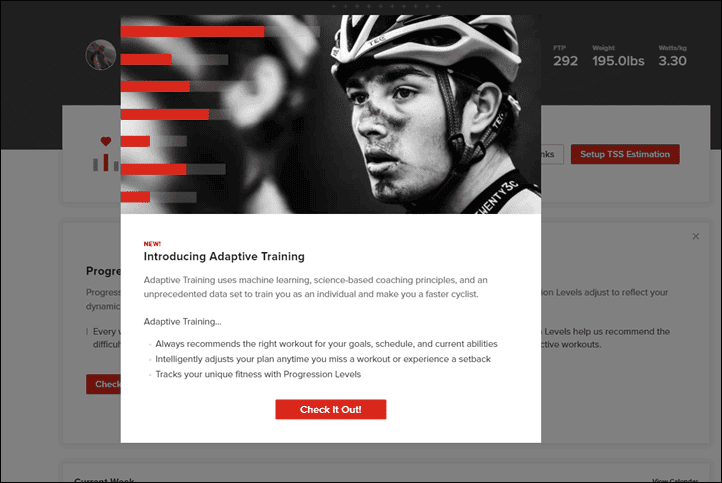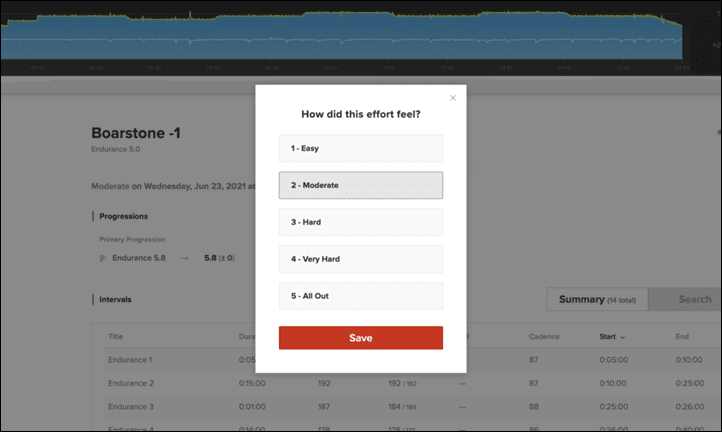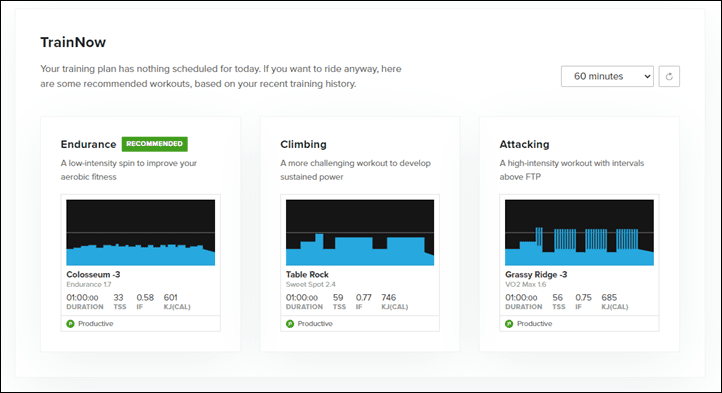Heads up – Massive Sports Tech Holiday Deals List is Live!!! The Garmin Fenix 8 is $250 off (even the Fenix 8 Pro is $100 off!), the Apple Watch Ultra 3 is on sale, the Garmin inReach Mini 2 is $249, the GoPro Hero 13 Black, DJI NEO, and a ton of other brands/deals, including Wahoo, Oura, Whoop, Polar, Samsung, Google, and more than 100 sports tech deals here!
I’m DC RAINMAKER…

I swim, bike and run. Then, I come here and write about my adventures. It’s as simple as that. Most of the time. If you’re new around these parts, here’s the long version of my story.

You'll support the site, and get ad-free DCR! Plus, you'll be more awesome. Click above for all the details. Oh, and you can sign-up for the newsletter here!
Here’s how to save!
Wanna save some cash and support the site? These companies help support the site! With Backcountry.com or Competitive Cyclist with either the coupon code DCRAINMAKER for first time users saving 15% on applicable products.
You can also pick-up tons of gear at REI via these links, which is a long-time supporter as well:Alternatively, for everything else on the planet, simply buy your goods from Amazon via the link below and I get a tiny bit back as an Amazon Associate. No cost to you, easy as pie!
You can use the above link for any Amazon country and it (should) automatically redirect to your local Amazon site.
While I don't partner with many companies, there's a few that I love, and support the site. Full details!

Want to compare the features of each product, down to the nitty-gritty? No problem, the product comparison data is constantly updated with new products and new features added to old products!

Wanna create comparison chart graphs just like I do for GPS, heart rate, power meters and more? No problem, here's the platform I use - you can too!

Think my written reviews are deep? You should check out my videos. I take things to a whole new level of interactive depth!

Smart Trainers Buyers Guide: Looking at a smart trainer this winter? I cover all the units to buy (and avoid) for indoor training. The good, the bad, and the ugly.
-
Check out my weekly podcast - with DesFit, which is packed with both gadget and non-gadget goodness!

Get all your awesome DC Rainmaker gear here!
FAQ’s
I have built an extensive list of my most frequently asked questions. Below are the most popular.
- Do you have a privacy policy posted?
- Why haven’t you yet released a review for XYZ product you mentioned months ago?
- Will you test our product before release?
- Are you willing to review or test beta products?
- Which trainer should I buy?
- Which GPS watch should I buy?
- I’m headed to Paris – what do you recommend for training or sightseeing?
- I’m headed to Washington DC – what do you recommend for training?
- I’m from out of the country and will be visiting the US, what’s the best triathlon shop in city XYZ?
- What kind of camera do you use?
-
5 Easy Steps To The Site
In Depth Product Reviews
You probably stumbled upon here looking for a review of a sports gadget. If you’re trying to decide which unit to buy – check out my in-depth reviews section. Some reviews are over 60 pages long when printed out, with hundreds of photos! I aim to leave no stone unturned.
Read My Sports Gadget Recommendations.
Here’s my most recent GPS watch guide here, and cycling GPS computers here. Plus there are smart trainers here, all in these guides cover almost every category of sports gadgets out there. Looking for the equipment I use day-to-day? I also just put together my complete ‘Gear I Use’ equipment list, from swim to bike to run and everything in between (plus a few extra things). And to compliment that, here’s The Girl’s (my wife’s) list. Enjoy, and thanks for stopping by!
Have some fun in the travel section.
I travel a fair bit, both for work and for fun. Here’s a bunch of random trip reports and daily trip-logs that I’ve put together and posted. I’ve sorted it all by world geography, in an attempt to make it easy to figure out where I’ve been.
My Photography Gear: The Cameras/Drones/Action Cams I Use Daily
The most common question I receive outside of the “what’s the best GPS watch for me” variant, are photography-esq based. So in efforts to combat the amount of emails I need to sort through on a daily basis, I’ve complied this “My Photography Gear” post for your curious minds (including drones & action cams!)! It’s a nice break from the day-to-day sports-tech talk, and I hope you get something out of it!
The Swim/Bike/Run Gear I Use List
Many readers stumble into my website in search of information on the latest and greatest sports tech products. But at the end of the day, you might just be wondering “What does Ray use when not testing new products?”. So here is the most up to date list of products I like and fit the bill for me and my training needs best! DC Rainmaker 2024 swim, bike, run, and general gear list. But wait, are you a female and feel like these things might not apply to you? If that’s the case (but certainly not saying my choices aren’t good for women), and you just want to see a different gear junkies “picks”, check out The Girl’s Gear Guide too.


![clip_image001[6] clip_image001[6]](https://media.dcrainmaker.com/images/2021/11/clip_image0016_thumb.png)
![clip_image001[8] clip_image001[8]](https://media.dcrainmaker.com/images/2021/11/clip_image0018_thumb.png)
![clip_image001[10] clip_image001[10]](https://media.dcrainmaker.com/images/2021/11/clip_image00110_thumb.png)
![clip_image001[12] clip_image001[12]](https://media.dcrainmaker.com/images/2021/11/clip_image00112_thumb.png)
![clip_image001[14] clip_image001[14]](https://media.dcrainmaker.com/images/2021/11/clip_image00114_thumb.png)
![clip_image001[16] clip_image001[16]](https://media.dcrainmaker.com/images/2021/11/clip_image00116_thumb.png)
![clip_image001[18] clip_image001[18]](https://media.dcrainmaker.com/images/2021/11/clip_image00118_thumb.png)























First
The NPE Cable is sold out everywhere. Doe it come back and if yes, any idea when?
It’s available at the NPE website – just purchased one myself.
link to npe-inc.com
Thanks, Dan. I’m living in the Netherlands and want to avoid sky-high shipping costs, stamp duty and duty fee’s…
I will see you mine $20 CAN + shipping. Tried XERT and it hurt my brain.
Looks like NPE could use a piece of cardboard with cut-outs to hold the 2 pcs and mail the device in a first class envelope to reduce international shipping costs to $15USD.
That would backfire if it got crushed but is it worth trying?
I dropped TR and went back to Xert due to outdoor rides not being captured, glad you mentioned it.
Is there some reason why platforms find it so hard to incorporate other platforms/outside training into their analyses/recommendations?
Wahoo SYSTM has been promising for a while now to even get other rides into their calendar as a display option.
In the case of TrainerRoad, it’s a bit tricky in terms of their end-goal. For them, they’re trying to match what the prescribed workout was with what you actually did. So if you just went out and rode hard, they don’t really know what the workout was supposed to be. They just know you rode hard (or, it looks hard). Thus they can’t really say if you achieved success or not.
However, in terms of more general ‘show this workout on my calender’ (like TR already does), no, that’s pretty trivial. The standards are there to make that happen from any platform to any platform with virtually no meaningful dev effort. All the major training platform and bike head unit companies have the ability to push .FIT files to other platforms easily. So any lack of integration there is just a given company not prioritizing getting it done.
Ray,
I don’t see why “success” is so important.
In fact, let’s set it aside for the moment and just look at my Garmin Edge 530 raw data provided to TR from my unstructured outside ride. Given that TR already has my HR and Power zones, it would seem to me that they could compare my unstructured ride to my zones and establish how hard/easy/long/etc I went in each zone. And from that data then update my Progression Levels as well as adjust my upcoming TR indoor workouts.
I’d appreciate your thoughts on this.
Tony G
Oh, I’m not disagreeing with that at all. It’s definitely doable, and TR says so themselves. I’m simply saying in terms of doing those two things (figuring out how challenging a ride was, versus just sticking it on your calendar), one is programmatically/development-wise more complex.
That said, I think there’s still value in capturing the subjective aspects of a non-structured ride (just like TR does today for a structured ride). In fact, oddly enough, Whoop actually does this fairly well, where they ask three questions after every workout (roughly like TR):
1) How hard was the workout (scale)
2) How well did you do the workout (scale)
3) Did you fail at doing the workout (yes/no)
That same logic could be applied here to TR. Their issue is sifting through commutes. For example, one of the ‘minor caveats’ I noted above is that if you use a Wahoo head unit today to do a structured TR workout, it actually doesn’t know that. TR instead just hopes/assumes that’s what you did based on the calendar. But in reality, if you did a morning commute first, it’ll actually match those two together. Whereas in Garmin, they get back a specific workout ID that allows matching up.
Anyways…
This is yet another instance where TR is playing catch up to Xert. Xert already quantifies the difficulty of the workout as well as your difficulty score for the workout you recorded. It doesn’t need an AI engine to be fed data to know. It will do this for any workout you create too.
I don’t think anyone has really argued that Xert wasn’t doing this before (as noted in the post). That’s never really been Xert’s issue.
(Of course, I’m sure if you put reps from both companies into a debate, they’d both argue their way of ‘coaching’ is better, as with all training programs/coaches.)
I asked TR Support re: the capture of non-TR workouts in Adaptive Training, and they indicated that it’s being worked on currently. It strikes me that any ride with power data should be something they can analyze and incorporate.
From TR’s latest TestFlight beta they seem to indicate Cable support as well. Although it’s worded almost accidental rather than targeted (something like “this should allow devices like the NPE Cable to work”)
Indeed, I checked with NPE on this after I saw that as well last night. NPE says it’s actually just for proper legacy CABLE support (so that you can multichannel multiple devices over the same BLE ID). Not the new API.
Thanks for confirmation and reply with a few more details. The new API piece was something I missed here. So trying to get TR Cable support straight…
TR before recent beta (with claimed Cable support) = Cable may have worked but TR could only see one ANT device through it due to duplicate BLE ID issue
TR after beta (with claimed Cable support) = Cable can send more than 1 device up due to allowing more than 1 device with same BLE ID.
“New API” that TR doesn’t support (but Xert now does) = Allow for BLE app to use Cable to connect to ANT devices without having to use the NPE Cable app to pre-setup the ANT/BLE device mapping?
If above is correct, this maybe means Cable now “works” with TR if you are ok with the more cumbersome setup process (assigning ANT devices and data to simulated BLE devices?)
I actually have a Cable lying around that I use to bridge my Kickr Gen2 Speed to my Garmin 530 to track “distance” while training indoors as I also use a set of Assiomas for a power meter (thus can’t connect the Kickr to the Garmin since it has the Assiomas for PM). Maybe I should try it out… but given my normal use case with an iPhone, TR, and otherwise BLE sensors the Cable was just something fun to pickup in case I ever went Zwift with AppleTV.
Correct, in a nutshell, the TR update basically just makes CABLE work like it always should have worked. It doesn’t expand it to the new capabilities with the API.
Follow-up, kind of…
Is Xert the only training app that uses the Cable API?
As far as I know, and from what NPE said, yes – at this point that’s it.
Why doesn’t NPE CABLE have an Android app?
Initially miffed about that but for most users it is a one-time setup chore and who doesn’t know someone with an iPhone? :)
“NOTE: This is the only time you need an iOS device with CABLE. After your sensors are configured with the app, you no longer need the CABLE Util app on an iOS device. However, you will need it for firmware and app updates, and if you add a new sensor or have two sensor setups, you’ll need the CABLE Util app again to change the sensor set or configure a new sensor.”
Full instructions: link to npe-inc.zendesk.com
“who doesn’t know someone with an iPhone?”Me ;. Was about to buy it before I noticed it didn’t have an Android app. Went for the 4iiii heart rate strap instead which does a similar ant to bluetooth conversation
Not the same capabilities.
What do you plan to do with it?
I use it to transmit heart rate and power meter info to zwift on apple tv. that leaves 1 free bluetooth channel on apple tv to control the smart trainer.
Does anyone know if the NPE CABLE allows ANT+ sensors to work with Zwift Run on Apple devices (iPad or Apple TV)? For example, would a Garmin FootPad or HRM-Run (each only ANT+) be able to transmit cadence via NPE CABLE and have Zwift Run on Apple recognize it?
It just converts the ant+ signal to a BT signal. Personally I find it easier to use my F6X and broadcast the BT signal to zwift via the “virtual” run setting.
Yes, I do this all the time.
Hey Ray, just a heads up NPE Cable was added to TR app as well which is something I was waiting on to make it easier to do a TR workout and Fulgaz/Zwift at the same time with just my phone.
See back and forth comments above… :)